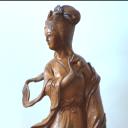Yahoo Answers is shutting down on May 4th, 2021 (Eastern Time) and beginning April 20th, 2021 (Eastern Time) the Yahoo Answers website will be in read-only mode. There will be no changes to other Yahoo properties or services, or your Yahoo account. You can find more information about the Yahoo Answers shutdown and how to download your data on this help page.
Trending News
Why don't glasses and mugs break when hot liquid is poured into them?
Nowadays, fewer things break if hot liquids are poured into them. Hot chocolate, Tea or Coffee often broke the things they were poured into. Now they don't. Why?
7 Answers
- KemmyLv 62 decades agoFavorite Answer
It was believed that if the mug is thicker, it will hold hotter liquids and so mugs were thicker then. This is not true because being thicker, the inner wall of the mug will expand much faster than the outer wall. This results in the mug cracking.
Nowadays, mugs and glasses have thinner walls. This results in the inner and outer walls expanding at rates that are closer and so the material will not crack.
- Anonymous2 decades ago
The reason something break or "brittle fractures" when rapidly heated (or cooled) is that the hot part of the material expands and the part that is still cold doesn't. This produces a lot of stress in the material causing it to break. Materials these days are made to have low coefficients of expansion so that they can withstand larger temperature fluxuations. Pyrex glass is a good example of this. Stuff is mixed into the glass so that there is very little expansion with temperature. The extreme example of this is the glass used to make large telescope mirrors. If the glass expands or contracts, the mirror shape changes and the telescope goes out of focus. The glass used in these applications is called Ultra Low Expansion (ULE) glass and does not change shape at all over reasonable temperature extremes.
- 2 decades ago
Usually the glass breaks because:
The cup is around room temperature. When the hot liquid is poured in, it rapidly expands parts of the glass while others stay the same. This breaks the cup.
The expansion is very minor, but major enough to make a difference. Thicker and larger cups have more of a problem then smaller and thinner cups.
- How do you think about the answers? You can sign in to vote the answer.
- Anonymous2 decades ago
If you heat a pyrex pot on the stovetop, then pour cool liquid into it....it will break. I wouldn't recommend trying it, though. It depends on the strength of the glass, but if the temperature difference is great enough, it will break. Hot coffee, tea, and hot chocolate are usually poured into ceramic coffee mugs; maybe they're more resilient than glass.
- ?Lv 42 decades ago
Glass is actually a very stiff liquid. In other words it will flow a little when heated. Maybe the new glasses or mugs have more glass in them and less impurities.




